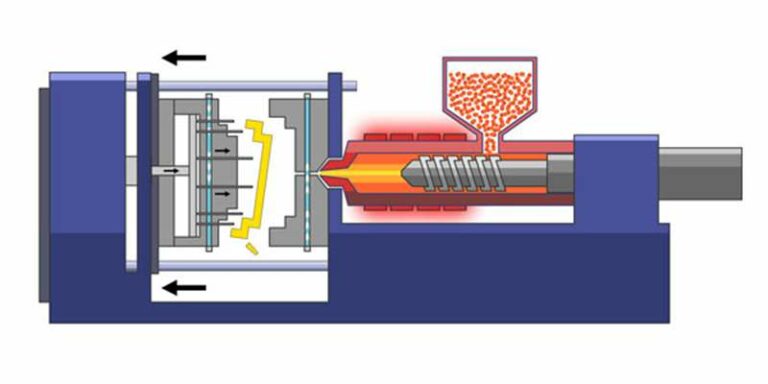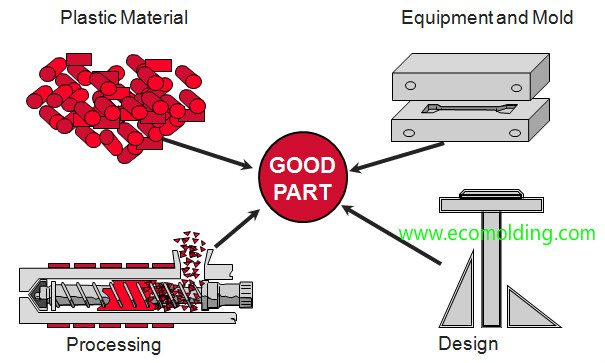Enhancing Product Advancement with Advanced Plastic Injection Molding Solutions
Enhancing Product Advancement with Advanced Plastic Injection Molding Solutions
Blog Article
Understanding the Basics of Plastic Shot Molding Procedures
Plastic injection molding serves as a foundation of modern production, supplying a methodical technique to producing intricate parts with precision. Checking out these vital aspects can reveal how even small modifications can lead to substantial enhancements in manufacturing results, raising questions concerning the potential for innovation in this well-known process.
What Is Plastic Shot Molding?
Plastic injection molding is a commonly used production process that changes thermosetting and polycarbonate products into specific and complicated shapes. This method is preferred for its capacity to generate high volumes of similar components with remarkable precision, making it a crucial technique in numerous industries, consisting of automobile, durable goods, and clinical gadgets.
The process involves melting the picked plastic product and infusing it into a mold under high pressure. The mold, made to the requirements of the desired part, enables the liquified plastic to materialize as it cools down and strengthens. As soon as the product has solidified, the mold is opened up, and the ended up element is expelled.
Plastic injection molding uses several advantages, consisting of minimized waste, uniformity in production, and the capacity to include intricate layouts that might be challenging with various other manufacturing techniques. Furthermore, it supports a broad series of materials, each offering distinct buildings that can be tailored for details applications. As markets continue to introduce, plastic shot molding stays at the leading edge, enabling the development of advanced products that fulfill advancing consumer needs.
The Shot Molding Process
The injection molding procedure is an innovative method that entails numerous essential phases to generate high-grade plastic components. Initially, plastic pellets are fed into a warmed barrel where they are thawed right into a thick fluid. This molten plastic is after that infused under high stress into a precision-engineered mold and mildew, which shapes the product into the preferred type.
As soon as the mold is loaded, the plastic is permitted to solidify and cool down, taking the shape of the mold tooth cavity. Air conditioning time is vital, as it influences the cycle time and the final buildings of the molded part. After enough cooling, the mold and mildew opens, and the completed part is expelled making use of ejector pins.

Materials Used in Shot Molding
Various products can be used in the injection molding process, each offering one-of-a-kind buildings that deal with specific applications. The most generally made use of materials consist of thermoplastics, thermosetting plastics, and elastomers.

Thermosetting plastics, like epoxy and phenolic materials, undertake a chemical modification during the curing procedure, resulting in a rigid, stringent structure. These products are suitable for applications requiring high heat resistance and architectural stability, commonly made use of in electrical insulators and automotive parts.
Elastomers, including silicone and rubber-based products, offer flexibility and strength. Their one-of-a-kind buildings make them suitable for applications that require flexibility, such as seals and gaskets.
Furthermore, specialized materials like bio-based plastics and compounds are gaining traction for their environmental benefits and enhanced efficiency characteristics, widening the extent of injection molding applications in different markets. Comprehending the buildings of these materials is vital for choosing the suitable kind for details tasks.
Benefits of Shot Molding
Injection molding attracts attention as a highly efficient production procedure that uses numerous benefits for producing complicated components with precision. Among the most substantial benefits is the capacity to create elaborate layouts that would certainly be difficult or difficult to achieve with other techniques (Plastic Injection Molding). The procedure permits limited tolerances and comprehensive attributes, making sure premium components
Additionally, shot molding is known for its quick manufacturing abilities, making it an optimal choice for high-volume production. Once the mold and mildew is developed, parts can be investigate this site produced swiftly, minimizing lead times and enhancing general performance. This performance not just reduces manufacturing costs however additionally supplies an affordable edge in the marketplace.
The adaptability of materials made use of in injection molding further boosts its charm. A vast array of thermoplastics and thermosetting polymers can be employed, allowing producers to select materials that ideal fulfill their certain requirements, including flexibility, warm, and toughness resistance.
Additionally, the procedure reduces waste, as excess material can often be reused and reused. This sustainability facet adds to a learn this here now decreased environmental impact, making injection molding a liable production selection. Overall, the advantages of shot molding make it a recommended technique for numerous sectors.
Factors Impacting Item High Quality
While many factors can affect item high quality in shot molding, comprehending these components is important for accomplishing ideal outcomes. Trick elements consist of product choice, processing specifications, and mold and mildew style.
Product choice plays a vital function, as various polymers show special properties that affect flowability, stamina, and thermal security. Poor product selection can result in flaws such as bending or incomplete dental filling.
Processing parameters, consisting of pressure, read the full info here cycle, and temperature level time, should be carefully managed. Variants in these settings can cause incongruities partly dimensions and surface coating. As an example, excessively heats may cause deterioration of the polymer, while insufficient stress can lead to brief shots.
Mold and mildew style is equally crucial, as it determines the flow of the molten plastic and the cooling process. Poorly developed molds might bring about uneven cooling prices, resulting in dimensional mistakes and recurring stress and anxieties.

Verdict
Finally, plastic injection molding works as a crucial production process that makes it possible for the effective manufacturing of high-quality components. Proficiency of the injection molding procedure, consisting of the understanding of materials and the impact of different aspects on item top quality, is necessary for accomplishing optimum results. The advantages of this technique, such as cost-effectiveness and style adaptability, more underscore its relevance throughout several industries, solidifying its condition as a recommended selection for high-volume manufacturing.
Plastic shot molding serves as a cornerstone of contemporary production, supplying a methodical technique to generating complex components with accuracy.Plastic injection molding provides numerous advantages, consisting of lowered waste, consistency in manufacturing, and the capability to integrate complex styles that may be testing with other manufacturing methods (Plastic Injection Molding). As sectors proceed to introduce, plastic shot molding remains at the center, enabling the development of innovative items that meet evolving consumer needs
The shot molding procedure is an innovative strategy that entails numerous essential stages to generate top notch plastic parts.In verdict, plastic injection molding serves as an essential production process that makes it possible for the effective manufacturing of top quality components.
Report this page